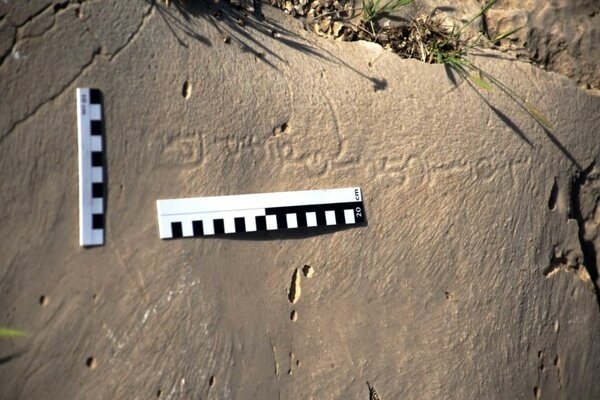INSUBCONTINENT EXCLUSIVE:
Monday.The petroglyph contains moral teachings, including condemnation of whistleblowing, said Iranian archaeologist Abolhassan Atabaki.In
Sassanid Iranian society, these moral teachings encompass a large part of Pahlavi literature, which demonstrates kindness, wisdom, respect,
past few years have always captured the interest of archaeologists, historians, and people interested in ancient languages.In January,
Atabaki announced that another Sassanid-era petroglyph, written on the subject of wishing for a holy marriage for an Iranian lady, was
discovered in the region.It is one of the most beautiful Sassanid inscriptions discovered over the past century in Marvdasht, as it bears a
wish for a holy marriage for an Iranian lady, he noted.An ancient rock drawing of a Sassanid-era horseman was also discovered in Marvdasht,
Sassanid rider with a wavy ribbon and a horse with four hooves, the archaeologist said.Since there are very few petroglyphs left from the
late Sassanid period, the discovery of this petroglyph is very significant and has study value despite its simplicity, he added.In many
ways, Iran under Sassanian rule witnessed tremendous achievements in Persian civilization
Experts say that the art and architecture of the nation experienced a general renaissance during Sassanid rule
In that era, crafts such as metalwork and gem engraving grew highly sophisticated, as scholarship was encouraged by the state; many works
from both the East and West were translated into Pahlavi, the official language of the Sassanians.Of all the material remains of the era,
only coins constitute a continuous chronological sequence throughout the whole period of the dynasty
Such Sassanian coins have the name of the king for whom they were struck inscribed in Pahlavi, which permits scholars to date them quite
closely.The legendary wealth of the Sassanian court is fully confirmed by the existence of more than one hundred examples of bowls or plates
of precious metal known at present
One of the finest examples is the silver plate with partial gilding in the Metropolitan Museum of Art in New York
The dynasty was destroyed by Arab invaders during a span from 637 to 651.The ancient region, known as Pars (Fars), or Persis, was the heart
of the Achaemenid Empire founded by Cyrus the Great and had its capital in Pasargadae
Darius I the Great moved the capital to nearby Persepolis in the late 6th or early 5th century BC
Alexander the Great defeated the Achaemenian army at Arbela in 331 and burned Persepolis apparently as revenge against the Persians because
it seems the Persian King Xerxes had burnt the Greek City of Athens around 150 years earlier.Persis became part of the Seleucid kingdom in

